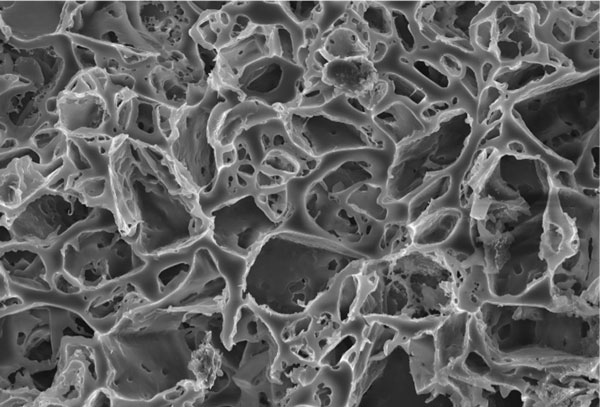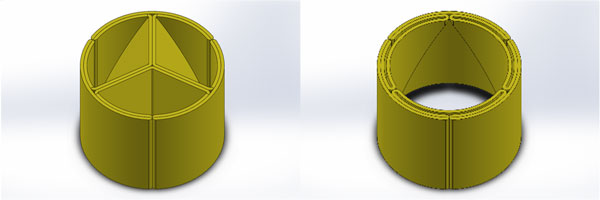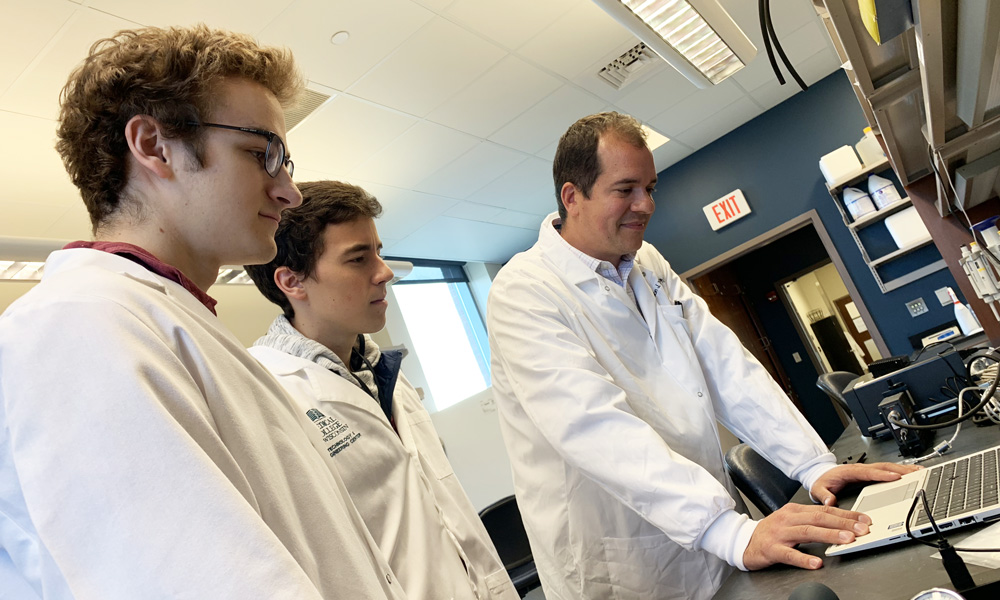In Vitro Heart Valve Tissue Engineering
 About 2.5% of the adult U.S. population has valvular heart disease, treatment of which often requires replacement of the heart valve with a mechanical or bioprosthetic valve. Neither option is ideal, as mechanical heart valves require lifelong anticoagulation therapy and bioprosthetic valves lack durability. These prosthetic heart valves also fail to parallel structure-function relationships of native heart valves. The clinical need for another treatment option is especially great for pediatric patients who require a replacement heart valve that can grow with them. For this reason, the development of a tissue engineered heart valve able to integrate with and respond to its environment would have a big clinical impact. To address this need, researchers at the Cardiovascular Regenerative Engineering Laboratory are working on approaches to engineer heart valve tissue.
About 2.5% of the adult U.S. population has valvular heart disease, treatment of which often requires replacement of the heart valve with a mechanical or bioprosthetic valve. Neither option is ideal, as mechanical heart valves require lifelong anticoagulation therapy and bioprosthetic valves lack durability. These prosthetic heart valves also fail to parallel structure-function relationships of native heart valves. The clinical need for another treatment option is especially great for pediatric patients who require a replacement heart valve that can grow with them. For this reason, the development of a tissue engineered heart valve able to integrate with and respond to its environment would have a big clinical impact. To address this need, researchers at the Cardiovascular Regenerative Engineering Laboratory are working on approaches to engineer heart valve tissue.
Valve cells will be seeded onto a porous biodegradable poly(glycerol sebacate) (PGS) scaffold and stimulated using molecular and mechanical approaches to produce engineered valve tissue. The engineered tissue will be assessed using histological approaches and mechanical testing to confirm the creation of healthy tissue with suitable mechanical properties for a heart valve replacement.

Investigators at the CaRE lab also aim to mold porous PGS into a specific form to allow for folding into a functional heart valve. The folded scaffold will be seeded with valve cells and conditioned in a bioreactor to stimulate tissue growth. The engineered valve will be tested in a pulse duplicator to test hydrodynamic performance and durability. Samples of the valve will also be tested to assess neotissue formation and scaffold degradation.
Through the approaches outlined above, the CaRE Lab aims to advance heart valve tissue engineering and work towards providing patients with a biocompatible heart valve replacement capable of growth and remodeling.
Images
Top: Representative scanning electron micrograph of porous PGS scaffold
Bottom: CAD renderings of the folded heart valve, open (right) and closed (left)
Project Lead
 Aleks Zielonka
Aleks Zielonka
Contact Aleks
View more CaRE Research

 About 2.5% of the adult U.S. population has valvular heart disease, treatment of which often requires replacement of the heart valve with a mechanical or bioprosthetic valve. Neither option is ideal, as mechanical heart valves require lifelong anticoagulation therapy and bioprosthetic valves lack durability. These prosthetic heart valves also fail to parallel structure-function relationships of native heart valves. The clinical need for another treatment option is especially great for pediatric patients who require a replacement heart valve that can grow with them. For this reason, the development of a tissue engineered heart valve able to integrate with and respond to its environment would have a big clinical impact. To address this need, researchers at the Cardiovascular Regenerative Engineering Laboratory are working on approaches to engineer heart valve tissue.
About 2.5% of the adult U.S. population has valvular heart disease, treatment of which often requires replacement of the heart valve with a mechanical or bioprosthetic valve. Neither option is ideal, as mechanical heart valves require lifelong anticoagulation therapy and bioprosthetic valves lack durability. These prosthetic heart valves also fail to parallel structure-function relationships of native heart valves. The clinical need for another treatment option is especially great for pediatric patients who require a replacement heart valve that can grow with them. For this reason, the development of a tissue engineered heart valve able to integrate with and respond to its environment would have a big clinical impact. To address this need, researchers at the Cardiovascular Regenerative Engineering Laboratory are working on approaches to engineer heart valve tissue.

